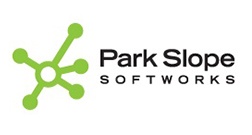As an inbound marketing company in Brooklyn, newsletters can be effective marketing tools, and they can also help you to communicate employees, prospects, suppliers, and current clients. They can be formatted as emails, handed out with paychecks, or printed up and dropped in the mail.
Like blog posts, however, newsletters can seem like one more item on your to-do list that you just don’t have time for. They can also be intimidating to write, especially if writing isn’t your forte.
But finding a way to write engaging newsletters on a regular basis can be an important component of your marketing success. Email newsletters reach certain customers very well, and they can also be forwarded to other interested people. Newsletters keep you top-of-mind so that when your potential customers need your products and services, you’re the first company they think of.
The following tips on how to write an engaging newsletter and how to begin email marketing. Which you can use as an essential part of your marketing plan.
1 – Balance Educational and Promotional Content

Although your email newsletter subscribers want to hear about your products and services occasionally, they will probably unsubscribe if it’s all self-promotion all the time.
Unless you have some big news to share (the release of a new product, a big sale), use most of your newsletter space for educational content, like infographics. In fact, it’s helpful to try to aim for 90% educational content and 10% promotional content. With this type of balance, you’re giving people valuable information they can use and subtly reminding them that you have a lot to offer them.
2 – Figure Out What Your Subscribers Need

The best way to continually grow your list of subscribers is to find out exactly what they’re looking for and then regularly deliver it. This is also true for newsletters to your employees and current customers.
Knowing your target audience is essential for writing good newsletter copy. If you know the concerns and interests of your audience, you can write copy that they’ll look forward to reading. One of the best ways to find out what your subscribers want is to look at your analytics. Which blog posts have performed the best? Which of your social media posts have garnered the most likes and retweets? These are the topics that are resonating, so use them often.
3 – Create Compelling Opening Lines

When you check your email, you subconsciously prioritize your actions based on the subject lines of your messages. Intriguing or pressing subject lines get your immediate attention. Boring subject lines make your eyes move on to the next email.
Don’t use boring subject lines! And extend this strategy to the opening lines of your newsletters. There is so much content competing for people’s attention these days, so you have to make your content stand out. Be sure to check out our guide on how to improve open rates on newsletters.
4 – Include One Easily Identifiable Call to Action

You’ll have a much easier time of analyzing the performance of your email newsletters when you include one easily identifiable call to action in each email. Not only will analytics be easier, but your readers will understand the point of the email.
Don’t overwhelm your readers by including several calls to action. You may want them to download your ebook, come into the store, like your Facebook page, and purchase tickets to your upcoming event, but restrain yourself and just ask for one of these things in each newsletter. Be sure to check out our call to action guide!
5 – Be Consistent

As tough as it may be, do what it takes to regularly produce and publish your newsletters. If you’re creating printable newsletters to be distributed on a monthly basis, create deadlines for yourself to make sure they’re distributed at the same time each month.
If you’re publishing email newsletters, create an editorial calendar and stick to it. It’s not uncommon for standards slip with email newsletters. The first newsletter might have well-constructed articles, beautiful graphics, and a thoughtful layout, and then, over time, the newsletters are shorter and less meaningful. This is a perfect recipe for unsubscribing.
But how do you stay consistent when you have so many other things to do? Here are a few tips:
- Use a template to guide your content and layout. Include a news item, seasonal advice, a couple of graphics, and a call to action. This is enough for a short email newsletter. Print newsletters will probably need a few more categories.
- Hire out your newsletter copy. You can pay freelance writers and graphic designers to produce your email newsletters.
- Recycle your blog and social media content. You can use your content directly in your newsletters, or you can refocus it to suit the theme of a particular newsletter issue.
As you incorporate engaging newsletters into your overall marketing plan, you’ll benefit from regular communication with potential and current customers. You’ll be able to deliver important information to them in a reliable way, and you’ll spread your messages far and wide.
For more information about inbound marketing, or to receive a free SEO analysis of your website, get in touch with us at Park Slope Softworks, your Brooklyn inbound marketing company.






